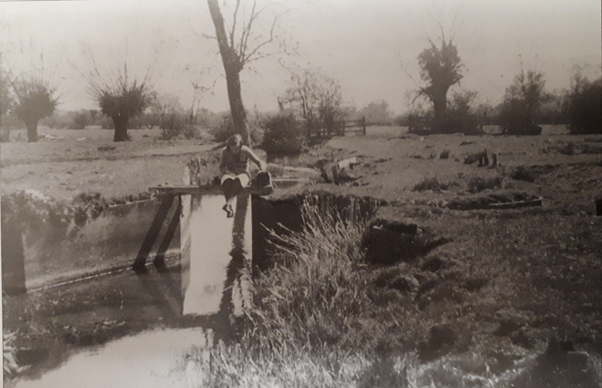Thanks to the labours of generations of geologists, geographers, archaeologists, anthropologists and historians, we know a great deal about the physical making and cultural representation of landscape. Ironically, however, our understanding of why landscape matters to us and what role it plays in our lives remains much less well developed.

This is partly because we are rarely conscious of how our spatial environment affects us and still less likely to put this into words. The problem is even greater when we try to understand what landscape meant to people in the past, since we can no longer survey or talk to them.
Recently, however, historians have developed a new method, comparative analytical biography, that allows us to access landscape experience in unprecedented depth and detail, a method that is potentially applicable to present-day landscape experience too.
It relies on detailed, long run diaries, many of which are now available in public archives or online. These enable us to get much closer to people’s actual landscape experiences, side-stepping the elitist assumption prevalent in older studies that ‘ordinary’ people passively absorbed the landscape perceptions and values of celebrated artists and writers, with no active agency or input of their own.
I have just completed what I believe is the first book-length landscape-focused comparative analytical biography, published earlier this year as Lifescapes: The experience of landscape in Britain, 1870-1960 (CUP, 2023).
The evidence presented in the book suggests that, far from being uncritically absorbed from the wider culture, landscape experience is often highly personal and can play a much more significant role in emotional self-regulation and personal development than has usually been recognized.
Yet it does so in very different ways for different people, at least for the eight diarists whom I studied in depth. Each of them had their own distinctive range of landscape preferences and practices, but there were some commonalities.
Two of them, the Swindon factory worker William Hallam and the Devon antiquarian Beatrix Cresswell, looked to landscape above all as a source of continuity and stability in their lives.
For another two, the itinerant weaver Violet Dickinson and the Hampshire artist Katherine Spear Smith, landscape offered a refuge from a public world that they often found hostile or threatening.
A third pair, Black Country probation officer Bert Bissell and Bolton GP John Johnston, used landscape as a means of refurbishing and reaffirming ethical convictions (Methodism for Bissell, and Whitmanite socialism for Johnston) that had been tarnished or called into question by adverse experience.
There was less in common between the remaining two diarists, the London council clerk Sadie Barmes and the Bristol bookseller Fred Catley – for her, rural landscapes were important as a means of self-discovery and connecting with others, whereas for him, particular landscapes became touchstones of identity while shielding him from unsettling emotional encounters with others.
These contrasting affective functions of landscape can, for each of the eight diarists, be related to experiences in childhood and youth, especially family structures and relationships. Although later encounters and experiences contributed to it too, the root of Hallam and Cresswell’s need to find continuity and stability in the landscape can be traced to the early loss of a beloved parent (his mother in Hallam’s case and her father in Cresswell’s).
Dickinson’s need to find a safe place where she could hide away from threats was in part a consequence of a childhood damaged by a cold, withdrawn mother and an affectionate but unpredictably absent father.
In differing permutations, much the same applies to the other five diarists I studied: in each case persistent, albeit not unchanging, emotional and psychological patterns did more to account for what kinds of landscape the diarist sought out, how they engaged with them and how these landscapes affected them emotionally than, for example, cultural and representational influences.
Much remains to be discovered about why landscape can affect us so powerfully at times and why we respond to it in such different ways, even within a given cultural context and timeframe. However, by allowing us to trace individual landscape experience in high resolution across the lifespan, comparative analytical biography opens up the prospect of understanding why landscape matters to us in greater depth and precision than ever before.
Dr Jeremy Burchardt is Associate Professor in History at the University of Reading.
